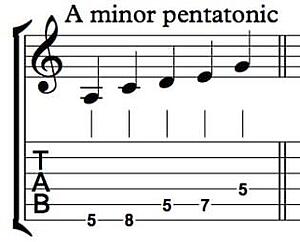
Unlocking the Pentatonic Mystery for Jazz Guitar
Mar 14, 2025When you think of iconic guitar solos, what comes to mind? Probably something like Stairway to Heaven, Hotel California, or maybe even Europa by Santana. What do all these solos have in common? You guessed it—pentatonic scales.
But if you've ever tried to bring those classic pentatonic licks into a jazz context, you've probably noticed it doesn't quite click the same way. So, what's the deal? And more importantly, how do we fix it?
Today, we're breaking down three powerful tricks to transform your pentatonic scales from rock-blues basics into fluent, expressive jazz vocabulary. Let’s dive in!
1. The "Up a Fifth" Trick
In the rock world, when you're jamming in the key of A, you might stick to the A minor pentatonic scale. Works like a charm, right? But in jazz, we need a little more harmonic sophistication.
Here’s the shift: If you're playing over a D minor chord, instead of using the D minor pentatonic scale, jump up a fifth and play A minor pentatonic. Why?
The A minor pentatonic over D minor gives you these tasty notes:
-
A (5th)
-
C (7th)
-
D (Root)
-
E (9th)
-
G (11th)
Boom! You've instantly added rich color and extensions to your lines, moving beyond the typical "bluesy" sound.

2. The SSD Pattern (Skip-Step-Down)
Let’s talk about a pattern jazz players love but rarely discuss: SSD.
Here's how it works:
-
Start on any note in your pentatonic scale.
-
Skip to the next note.
-
Step up one note.
-
Down to the previous note.
Repeat this process across the strings, and you get a sleek, modern sound. It breaks you out of box patterns and adds smooth voice-leading to your lines.
Pro tip: Practice this in both ascending and descending directions to fully unlock its potential.
3. The "Up a Half-Step" Method for II-V-I
Struggling to outline the changes in a classic II-V-I progression? Here’s a simple pentatonic-based hack that jazz pros use to sound sophisticated without drowning in theory.
Let’s say you’re playing a II-V-I in C major:
-
D minor 7 (II)
-
G7 (V)
-
C major 7 (I)
For each chord, shift your pentatonic scale up a half-step:
-
Over D minor: Use A minor pentatonic (up a fifth from D)
-
Over G7: Use B-flat minor pentatonic (up a half-step from A)
-
Over C major: Use B minor pentatonic (up a half-step from B-flat)
This creates beautiful tension and release, and it makes your lines pop without having to spell out every arpeggio.
Bonus: Combine Chord Stabs with Pentatonics
Want to sound even more professional? Mix in chord stabs between your pentatonic lines. Focus on hitting the 3rd and 7th of each chord—these are the essential guide tones that make the changes clear.
For example, on the G7, just play a simple F and B (the 7th and 3rd), and you’ll anchor your lines to the harmony effortlessly.
Final Takeaways
Here’s your quick checklist for jazzing up your pentatonic game:
-
Think up a fifth to add extensions over minor chords.
-
Use the SSD pattern to break out of predictable boxes.
-
Shift up a half-step during II-V-I changes for instant sophistication.
-
Add chord stabs for harmonic clarity.
With these tricks, you can transform your familiar pentatonic licks into lines that sound like a seasoned jazz player. So, grab your guitar and start experimenting!
And hey—if you want even more tricks, patterns, and in-depth lessons, make sure to check out the other resources on JazzGuitarLessons.net. Happy playing!









